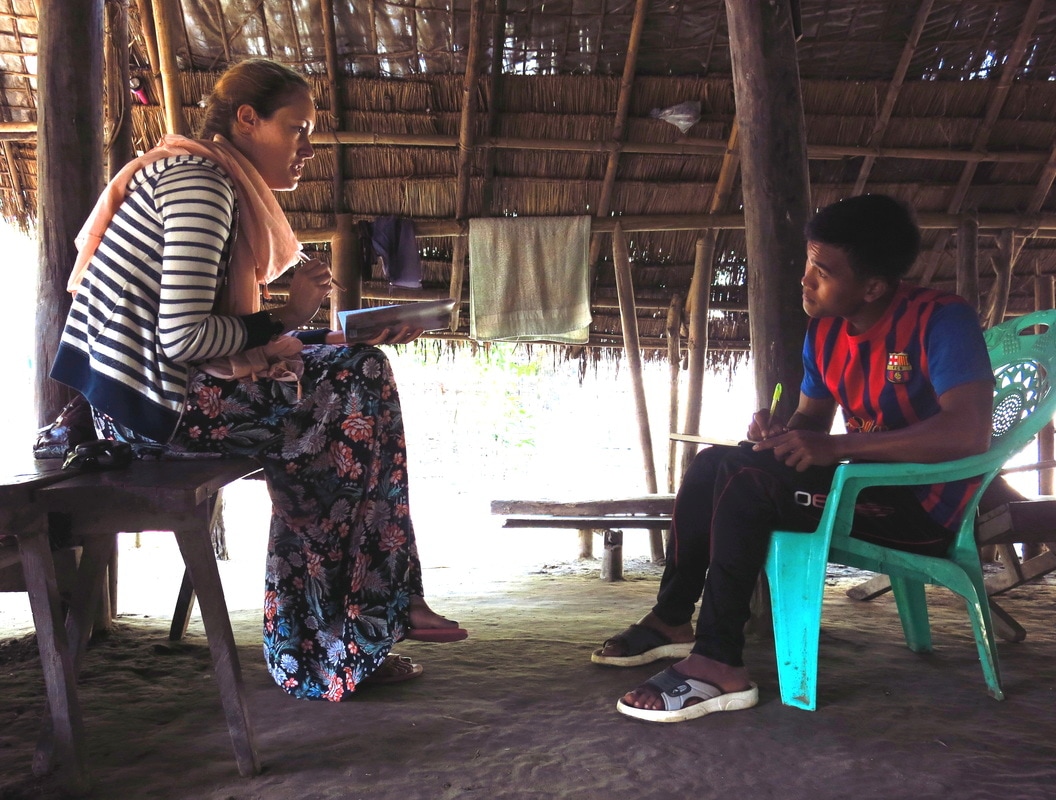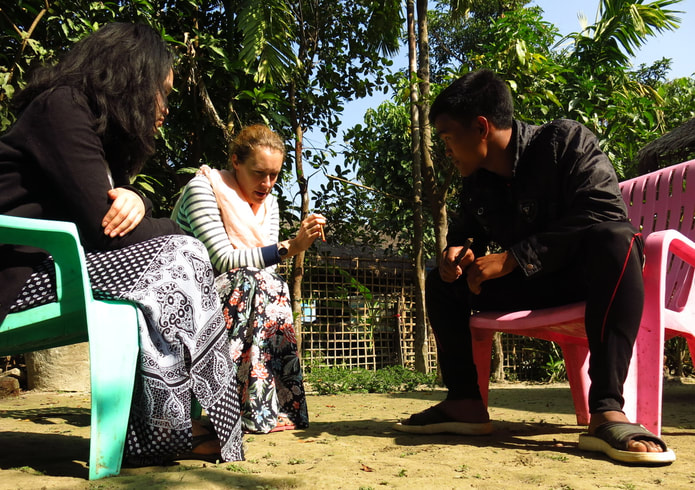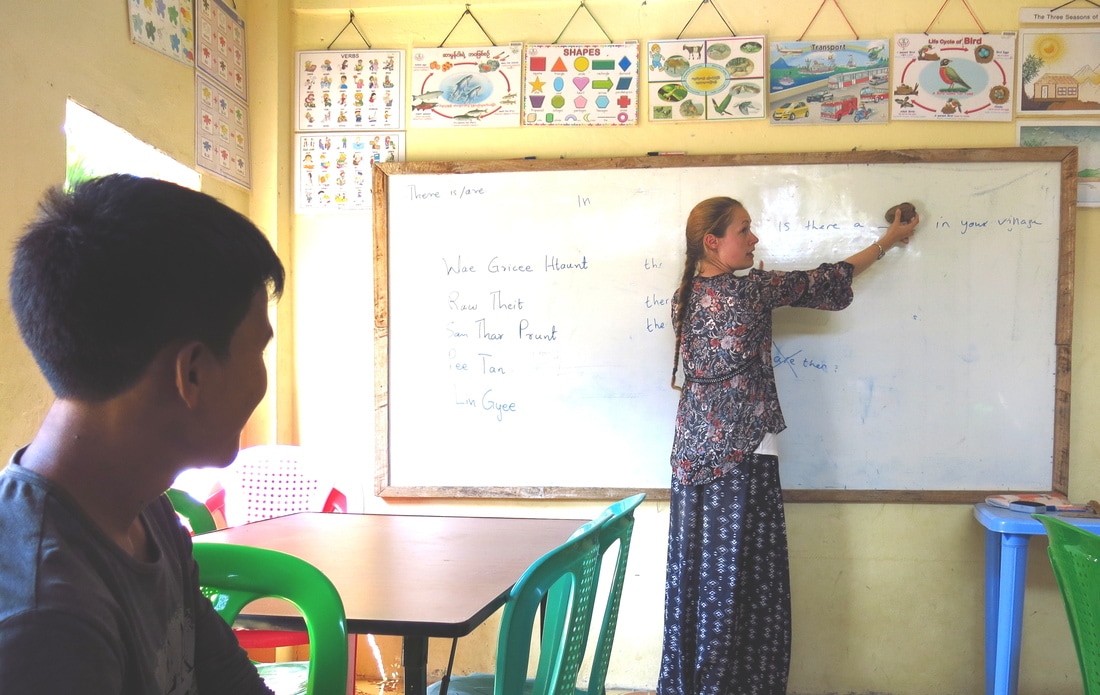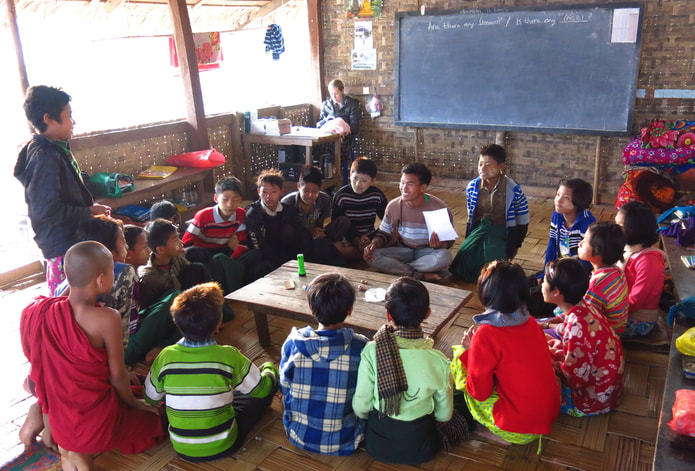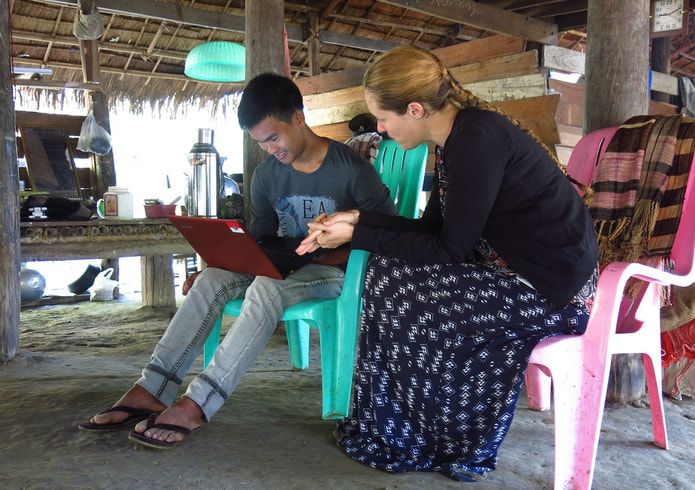|
Something that NEH has an eternal struggle with is feedback from and with teachers. This is crucial to the learning process, and absolutely essential when one party is out of the country. Culturally, Myanmar people do not like saying ‘no.’ They do not like to disappoint the other party, and they work in a hierarchy which means that a pupil giving feedback to a teacher is unheard of, unless the feedback is ‘it was great, all great. You are a wonderful teacher!’ I had given a little feedback in the previous classes that I watched; this was then implemented to reported success. I have done this with two separate teachers but have unfortunately not been able to return to see the reported success for myself. This time we were able to fully discuss the lesson, give feedback, change the lesson, and see it being taught in the improved way based on the comments. This is what needs to happen in order to create autonomous local teachers who can plan, implement and troubleshoot their own classes, lessons and curricula. As we went on through our 10 day stay, our teacher trainee became more and more eager for feedback and we would convene straight after class to go through our notes and compare. He would take notes on my teaching as well as me on his; this way we hope to encourage an open, honest relationship where he can tell me his opinion. Let’s face it, not everything works in the classroom and if I can explain that’s OK and that it’s OK to give objective negative feedback to improve performance then that will be an amazing step forward. Some activities I purposefully set up as examples of what not to do when teaching, in the hope that our trainee would pick up on this and perhaps explore ways of improving that section of the lesson. He learned amazingly quickly and was very good at writing down what he saw happening in the class around him. He started to go nowhere without his trusty notebook and pen into which he would jot down notes about what was working or not in the lesson. Our first breakthrough with feedback came when we were discussing the grade 8 pupils after our initial observation, as this was a class that I had never seen. Van and I were musing that ‘bad’ students shouldn’t be ignored or encouraged to fail by their teachers. This negative interaction between teacher and pupil not only leads to a self-fulfilling prophecy of failure, but also creates a culture of judgement on academic merit alone as well as significantly influencing the relationship between students. Our third gang member, the teacher trainee, said that he prefers to spend time on the good students. However, upon hearing our reasoning he came to see that it is negative for everyone to simply give up on a person. He explained how one of his neighbor’s children is very weak academically which leads to strife in the home, but the child is very talented with electronics and can fix a broken plug at ten paces with no formal training. After 3 classes and feedback sessions on grade 8, we had a textbook perfect lesson. We had formulated some rules regarding what would and wouldn’t work in the classroom: I could not teach alone as this got the students too excited and without some translation they were not yet capable of doing what was asked of them. They could not yet undertake full group activities as they have too much energy and are always teetering on the edge of anarchy. For now, the activities should be very teacher-led and controlled. Of course we must continue to abide by the 80/20 rule and of course the students must use the target language wherever possible, but we must plan activities which only small groups or a rotation methodology to avoid screaming, shouting and disorder in the classroom. For our third class with them we tried to go to market. At this stage we were still ironing out the finer details of how to prepare for class; with me trying to insist that we need to read the plan, discuss any potential problems and find solutions the night before the class and my local teacher seeming to think that reading ad lib at the time of instruction was perfectly adequate. The class was messy; with students grabbing stuff from the market table and giggling like demented pixies. However, as the days moved forward, the children became calmer. They learned that the teacher arrived 15 minutes early to prepare and that whatever was being prepared was going to be a mental challenge provided they behaved themselves. On the fourth day, we were cutting up strips of paper which captivated the students who knew that this would form some activity for them later in the lesson. We re-did the market class in a calmer fashion. It went beautifully. We had taken the time to analyze what went wrong last time and how we could correct those issues. Certainly teaching the same syllabus to two classes helps to hone the technique and squash any problems that arise. It is very useful to see how the same lesson cannot be rolled out with no extra consideration to different classes based on the teacher’s whims. Each class is different and thus the lessons must be tweaked, even if the adjustment is very minor. After a week of adapting and changing based on feedback after the classes we had a system which worked pretty well. The sooner we did feedback, the fresher it was in everyone’s minds and the more hope we had of a successful session which would lead to positive changes in the upcoming lessons. Further, by videoing the lessons we could re-watch sections and comment on what exactly made a section go well or badly. This proved to be useful as we introduced the concept of feedback to our second trainee teacher; he was able to see the lessons that we had taught earlier in the week alongside our oral feedback. It’s a process which is still evolving. We are gaining the trust of our protégé and our second hope as well. The better the subsequent lessons are, and the more repeatable they become the more valuable the feedback becomes. As with anything in life, once the results are apparent there is suddenly method in the presumed madness.
Chloe Smith NEH Coordinator and Teacher Trainer Related Posts: The Art of Feedback Giving and Receiving Honest Feedback Teaching Discussions with Monks and Lay People The Head Monk's Way of Thinking Sittwe Teacher Training Observing Grade 8 English Building a Firm Foundation
Comments
|
This section will not be visible in live published website. Below are your current settings: Current Number Of Columns are = 3 Expand Posts Area = 1 Gap/Space Between Posts = 20px Blog Post Style = card Use of custom card colors instead of default colors = Blog Post Card Background Color = current color Blog Post Card Shadow Color = current color Blog Post Card Border Color = current color Publish the website and visit your blog page to see the results |
|
© New Education Highway 2024
Except where otherwise noted, content on this site is licensed under a Creative Commons Attribution 4.0 International License. |

